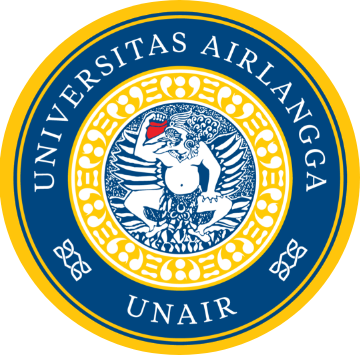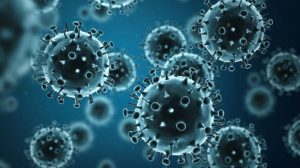Uterine torsion is the rotation or rotation of the pregnant uterus about its longitudinal axis. Uterine torsion is one of the causes of dystocia, leading to calf death and dam abandonment. Uterine torsion occurs during the last trimester of pregnancy or during labor. Post-cervical torsion is more common than pre-cervical torsion. Torsion to the left is more common than to the right. Clinical symptoms vary depending on the degree of torsion. Torio uteri treatment aims to turn the uterus back (reTorsio or detorsion) to its physiological position. The success of reTorsion is influenced by the timing and degree of uterine torsion. Furthermore, the calf’s birth can be done vaginally or by cesarean section, depending on the success of cervical dilatation. The viability of calves born from uterine torsion cases varies from 14-90%. After the incidence of uterine torsion, postpartum development in cows also varies, ranging from mild irritation, a more extended period of uterine involution, to fatal complications that can occur. The effect of uterine torsion on fertility depends on the success of parturition treatment and secondary complications. Complications in the form of electrolyte disturbances are about 50%, birth-related injuries are about 20%, and placental retention varies widely between 3-52%. The incidence of uterine torsion is between 0.5 and 1% of all births in Germany. Most cases of uterine torsion are successfully corrected and followed by vaginal delivery with live calves. Pluriparous cows have a greater risk of uterine torsion than heifers, while dams with feto-pelvic disproportion or twin pregnancies have a lower risk. Farmers’ economic losses from cows with intrapartum uterine torsion include maintenance costs, infertility, calf mortality, and maternal mortality.
The Simmental Crossbreed cow that experienced the uterine torsion case belonged to a farmer in Seloharjo Village, Kapanewon Pundong, Bantul Regency, Special Region of Yogyakarta. The cow is a Simmentalcrossbreed, five years old. The cow fed Kalanjana grass, straw, bran, and wheat bran. The cow’s reproductive history has given birth twice, previously repeated mating 17 times at the previous owner’s and four times at the time of the case occurred. The gestation period is nine months and ten days. It happened on July 26, 2021.
Based on the anamnesis, it is known that on July 25, 2021, at 15.00, the cows began to get restless, walked around in the cage, lay down, and stood alternately. Furthermore, the cow started to strain stronger over time, but the vagina did not appear edematous. There was no visible rupture of the membranes, neither legs nor the head of the calf that came out of the dam’s vulva. The situation lasted until the next day. Even the cow’s condition was getting weaker, often lying with legs stretched stiffly forward while continuing to push. Cows did not want to be fed and drink since they started to feel the signs of giving birth. On July 26, 2021, at 6.30, the owner contacted the Veterinarian for treatment. Veterinarians immediately came to the location (6.45 hours) and examined. It was found that the body weight of the dam was approximately 400 kg, five years old, the temperature was 39°C, and the dam looked tired. Examination through vaginal exploration revealed that the lumen of the uterus was blocked and fully torsioned to the left.
When the dam is examined in a standing position, the dam is laid down using the side rope method first. Furthermore, the dam was rolled over several times to obtain the maximum uterine lumen opening position. The calf’s position was head flexion posture to remove it vaginally. The head was repositioned first. Next, the head was tied, followed by the binding of the two ankles of the calf; after that, a forced pull was carried out until the calf came out. The drugs given are analgesics-antipyretics (repeated in the afternoon), long-acting antibiotics, vitamin B1, and vitamins and minerals mixed in drinking water.
Post-treatment, the dam’s condition was still weak, unable to stand up, did not want to be fed, and only drank a little. After a few hours, the dam was up and walking around, fed, and drank a little, and the placenta was completely separated. The calf’s condition was alive, female sex, weighing approximately 40 kg, and weak, indicating that the calf was inhaling much amniotic fluid. The calf was treated to expel the fluid and immediately milk the dam. Milk from the dam was expressed and given to the calf with a syringe. The calf’s condition gradually became healthy, was able to walk in the afternoon, and finally suckle on its own from its dam. In conclusion, the case of uterine torsion in Simmental crossbreed cows has been successfully treated 24 hours after the birth signs using the traditional rolling technique, and the calf can be expelled vaginally. The condition of the dam and calf after the treatment of uterine torsion gradually returned to health.
Author: Sri Rahayu
Puskesmas Pundong, Jl. Joyowinoto, Jamprit, Panjangrejo, Pundong, Bantul, Yogyakarta55771, Indonesia
This paper has been published in OVOZOA : Journal of Animal Reproduction (https://e-journal.unair.ac.id/OVZ/index) English language journal from a collaboration of Universitas Airlangga (http://210.57.208.200/) and Indonesian Veterinary Reproduction Department Association (ADERVI) and Indonesian Veterinary Reproduction Association (ARHI). It can be accessed on: https://e-journal.unair.ac.id/OVZ/article/view/32407
Summarized from:
Rahayu S. 2022. Uterine torsion in Simmental crossbreed cow. Ovozoa 11: 41-48.









